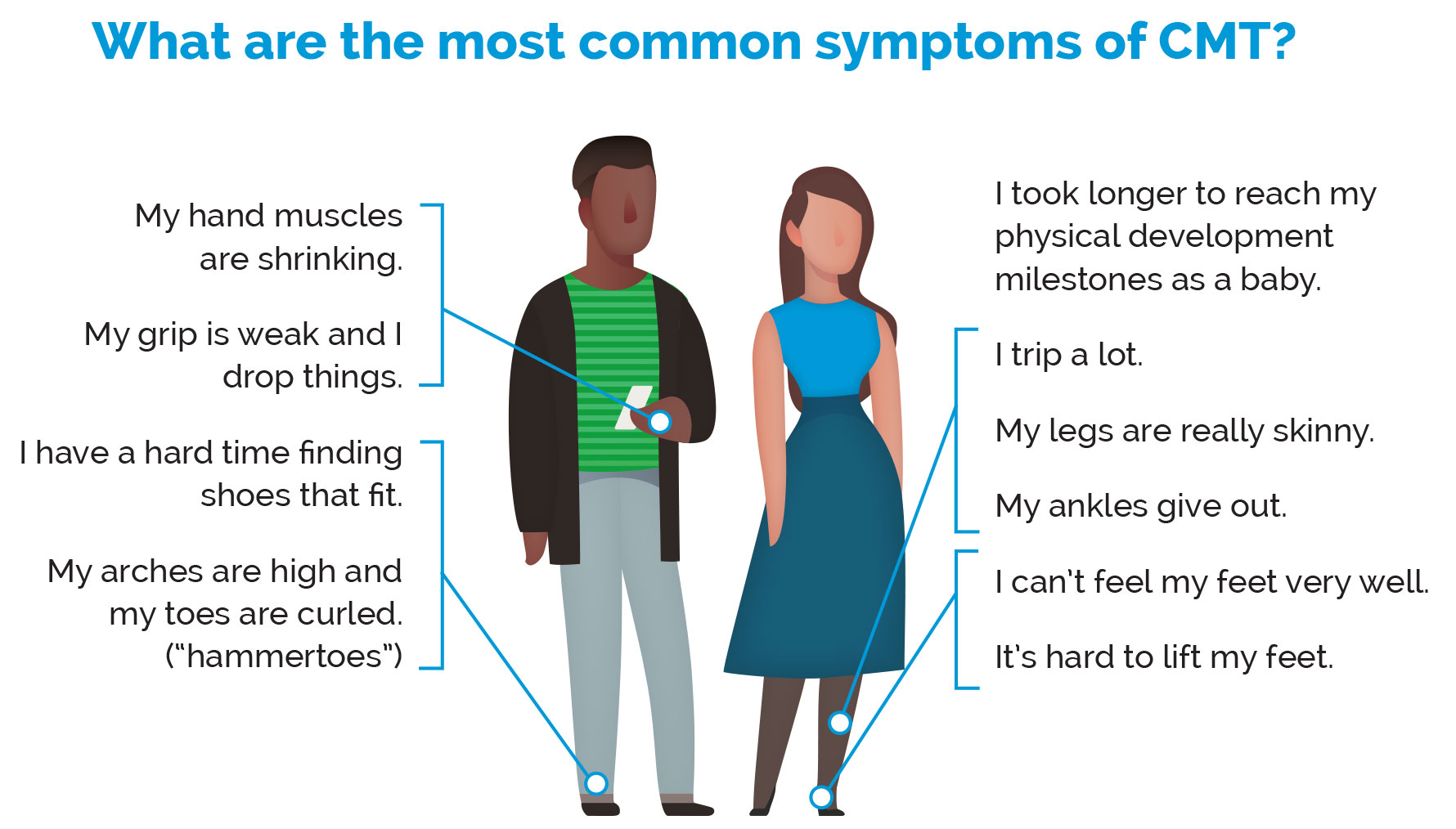Signs and Symptoms of Charcot-Marie-Tooth
The symptoms of Charcot-Marie-Tooth (CMT) and the age when they begin depend on the type of CMT. Some people with CMT start experiencing symptoms as teens or young adults. Other types of CMT can cause symptoms in babies.
CMT symptoms found in teens or young adults:
- Trouble gripping and holding things
- Tripping and struggling with balance
- Shuffling, marching or dragging the feet when walking
- Cold hands and feet
- Numbness or tingling in the feet or hands
- Curled toes (also called hammertoes)
- High arches in the feet
CMT symptoms found in babies:
- Trouble grasping and holding things
- Taking longer to hold their head up, sit, crawl, stand and walk
- Falling more than babies their same age
Less common symptoms of CMT can include sleep apnea, swallowing problems or choking, hearing loss, scoliosis, and breathing problems (from respiratory muscle weakness).

How is Charcot-Marie-Tooth disease diagnosed?
CMT is diagnosed by a neurologist or through a genetic test. The neurologist will do an exam, ask about your symptoms and ask if anyone in your family has CMT or symptoms of CMT.
The doctor might also order tests to help make the diagnosis or to determine the type of CMT you have. These tests can include:
- Genetic testing, by taking a blood or saliva sample, to look for mutations
- Electromyography (EMG) to find out if the problem is with the nerves
